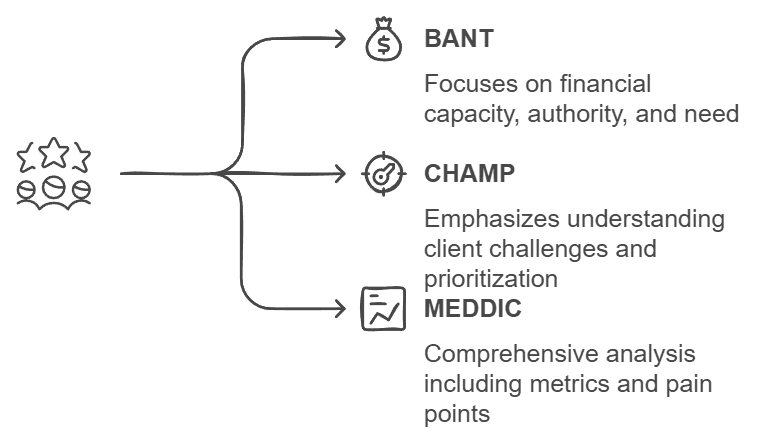Effective lead qualification is crucial to increasing conversion rates. A structured lead qualification process allows you to focus on only those leads with the highest potential, thereby increasing efficiency. Qualified leads are more likely to be engaged and develop long-term relationships. In today’s competitive marketplace, a sophisticated lead qualification strategy can make the difference between hitting your targets and failing.
Lead qualification is a systematic screening of potential customers to determine their likelihood of purchasing a product or service. This process includes identifying the prospect’s level of interest, financial capacity, purchasing decision-making authority, and the match between their needs and the company’s offerings. By distinguishing between qualified and unqualified leads, you can target your sales resources more effectively.

Implementing a solid lead qualification strategy has benefits such as optimizing resources, increasing conversion rates (by targeting leads that are a good fit for your ICP, you increase the likelihood of successful sales), and improving customer relationships, as interacting with leads who are genuinely interested in and need your product helps to build a better perception of your business.
Effective Lead Qualification Frameworks
BANT (Budget, Authority, Need, Timing): a classic framework that assesses whether a client has the financial capacity, decision-making authority, and real need.
CHAMP (Challenges, Authority, Money, Prioritization): focuses on understanding the client’s problems, confirming their authority, assessing their financial capacity, and prioritizing their needs.
MEDDIC (Metrics, Economic Buyer, Decision Criteria, Decision Process, Identify Pain, Champion): a comprehensive system that delves into quantitative metrics, examines decision criteria and processes, identifies pain points, and recognizes internal champions.

Steps to implement
- Ideal customer profile (ICP): This profile serves as a guide for evaluating potential customers. Identify the characteristics of your ideal customer – industry, company size, pain points. Learn more about how to do this effectively with our template.
- Lead scoring: assign numerical values to leads based on their relevance to your ICP and their level of engagement. This will help you prioritize leads for further work with them.
- Do a deep dive: study all available information about the company, its market position, and specific needs to tailor your approach.
- Always ask clarifying questions: uncover the prospect’s problems, decision-making authority, and budgetary constraints.
- Analyze: regularly review the results of the lead qualification process to identify areas for improvement and adjust your strategies.

Common Pitfalls
- Neglecting continuous assessment: lead qualification is an ongoing process. Re-evaluate leads regularly as their situations and needs change over time and become irrelevant.
- Neglecting lead nurturing: very few leads are ready for immediate purchase. Implement nurturing strategies to keep your brand top of mind until they’re ready to engage.
To sum up
Prioritizing high quality leads optimizes your efforts and saves your resources from being spread thin. When you interact with leads who really need and value your product or service, it’s a positive outcome in any case – even if the purchase doesn’t happen, you’ve built a reputation and had good communication, which can’t help but make you and your lead more satisfied. Over time, this approach contributes to a more loyal customer base and positive word of mouth, which will further distinguish your brand. Implement these practices in your lead qualification process and direct your efforts in the most promising direction.
